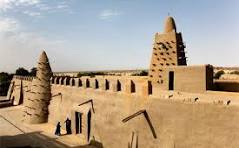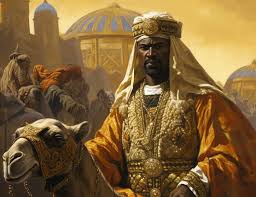Introduction
The Ancient Mali Empire stands as one of the most remarkable civilizations in the history of West Africa. From its humble beginnings in the 13th century to its peak in the 14th century, Mali’s influence reached across vast regions of Africa, becoming a center of trade, culture, and intellectual achievement. But what makes the Mali Empire so fascinating? What were its greatest achievements of the Mali Empire Civilization of the West Africa, and how did it leave an indelible mark on the world?
The Mali Empire, one of the greatest civilizations of medieval Africa, flourished between the 13th and 16th centuries. Located in what is now modern-day Mali, the empire was known for its immense wealth, cultural achievements, and strategic position along key trade routes. At its height, Mali was a powerful empire, ruled by legendary figures like Sundiata Keita and Mansa Musa. The empire’s legacy continues to influence West Africa, particularly in areas of trade, education, and Islamic culture. In this article, we’ll explore the fascinating history of the Mali Empire, its rise to power, and the lasting impact it had on the world.
Introduction: Mali’s Rich History and Legacy

The Mali Empire, located in the heart of West Africa, is often overshadowed by other ancient civilizations like Egypt or Rome. Yet, its influence on world history is profound. Known for its wealth, advanced education, and powerful rulers, the Mali Empire became one of the largest and most prosperous empires in medieval Africa.
Its strategic position along major trans-Saharan trade routes allowed it to become a hub for trade in gold, salt, and other valuable resources. The empire was also a center for Islamic scholarship, attracting scholars from across the Islamic world.
The Birth of the Mali Empire

Origins and Early History
The roots of the Mali Empire can be traced to the early kingdoms of West Africa, notably the Kingdom of Ghana. However, it was the rise of the Kingdom of Manding that laid the foundation for what would become the Mali Empire.
Around the 12th century, the region known as Manding was a collection of powerful and semi-independent states. These included the powerful kingdoms of Sosso and the smaller clans that lived around the Niger River. The most famous of these clans, the Keita Dynasty, would eventually become the rulers of Mali.
Also Read Exploring the Historical Context, Brutality, and Lasting Impact of the Slave Trad
Sundiata Keita: The Lion King

The Mali Empire was officially founded in 1235 by Sundiata Keita, also known as the “Lion King.” Sundiata, a legendary figure in African history, was born into the royal family of the Kingdom of Manding. After a period of exile and overcoming numerous challenges, Sundiata united several smaller tribes and defeated the Sosso Empire, which had been a dominant force in the region. This victory at the Battle of Kirina is considered one of the turning points in West African history and marks the beginning of the Mali Empire.
Sundiata’s leadership established the Mali Empire’s political and military foundations, and he became the first emperor of Mali, known as the “Mansa.” His reign brought peace and stability to the region, and his governance was marked by his fair administration, which emphasized justice and the protection of trade routes.
You May Also Read Africa Early Rise and Development
The Golden Age of Mali
Mansa Musa and the Empire’s Peak

Perhaps the most famous ruler of the Mali Empire is Mansa Musa, who reigned from 1312 to 1337. Mansa Musa is often remembered for his incredible wealth, which he amassed through Mali’s control of gold and salt trade. His pilgrimage to Mecca in 1324 is legendary, not just for its spiritual significance, but for the extravagant display of wealth he brought with him. It is said that Mansa Musa’s caravan included thousands of soldiers, attendants, and camels, all carrying gold, and his lavish generosity along the way caused inflation in cities he passed through.
But Mansa Musa’s reign was about more than just gold. Under his rule, Mali became a global center of commerce, culture, and education. Mansa Musa’s policies ensured the flourishing of trade, including the trans-Saharan trade in salt, gold, and other goods. The empire’s wealth attracted merchants, travelers, and scholars from all over Africa, Europe, and the Middle East.
Cultural and Intellectual Achievements
Mali’s peak under Mansa Musa also marked an era of intellectual and cultural growth. The city of Timbuktu, which became the jewel of the empire, was renowned as a center of learning, culture, and religion. The University of Sankore in Timbuktu housed thousands of scholars and was one of the most prominent institutions of learning in the medieval world. It attracted scholars from as far as the Middle East, and its libraries contained vast collections of manuscripts on subjects such as astronomy, medicine, law, and literature.
The empire was also a beacon of Islamic scholarship, with many of its rulers, including Mansa Musa, being devout Muslims. Islamic architecture flourished, with grand mosques and public buildings being constructed in Mali’s cities. The Djinguereber Mosque in Timbuktu, built by Mansa Musa, remains an iconic symbol of Mali’s cultural and religious heritage.
The Decline of the Mali Empire

The Fragmentation of Power
The decline of the Mali Empire began after the death of Mansa Musa in 1337. Although the empire continued to exist for several more decades, it faced a series of challenges that weakened its once-glorious state. The empire became too large to govern effectively, and its provinces began to assert more independence. Internal conflicts and succession disputes weakened the central authority, and the once-strong unity of the empire began to dissolve.
Furthermore, external threats, including invasions from neighboring kingdoms and the growing power of the Songhai Empire, contributed to Mali’s decline.
The Songhai Empire and the End of Mali’s Dominance

By the 15th century, the Songhai Empire had surpassed Mali in power and influence. The Songhai Empire controlled much of the former Mali territory and eventually led to the fall of Mali. In 1468, the Songhai forces, under the leadership of Sunni Ali, defeated the Mali Empire at the Battle of Tondibi. This marked the end of Mali’s dominance in West Africa, although remnants of the empire continued to exist for several decades.
Legacy of the Mali Empire
The fall of the Mali Empire did not erase its profound impact on the region or the world. Even after its decline, the cultural, economic, and intellectual contributions of the Mali Empire continued to shape West Africa and beyond.
Economic Influence: Trade Routes and Gold

Mali’s control of the trans-Saharan trade routes remained a significant legacy. The empire’s strategic location allowed it to become a hub for trade in gold, salt, ivory, and other goods. Even after the fall of Mali, the gold trade continued to be a key driver of West African economies.
Cultural and Educational Legacy

The legacy of Mali’s centers of learning, particularly in Timbuktu, continues to inspire scholars and historians today. The manuscripts that were preserved in Timbuktu’s libraries are considered priceless records of African history, literature, and science. The city of Timbuktu remains a symbol of the golden age of African intellectual and cultural achievement.
Also Read The Troubling Legacy of Colonial Education: Erasure and Cultural Suppression
Influence on Islam in West Africa

The spread of Islam across West Africa owes much to the Mali Empire’s promotion of the religion. Mansa Musa’s pilgrimage to Mecca and his patronage of Islamic scholars and institutions had a lasting effect on the spread of Islam in the region. Today, Islam remains one of the dominant religions in West Africa.
Conclusion: The Enduring Legacy of the Mali Empire
The history of the Mali Empire is a testament to the power of unity, vision, and leadership. From its humble beginnings under Sundiata Keita to its glorious height under Mansa Musa, the empire created a legacy of wealth, learning, and culture that continues to resonate today.
Though the Mali Empire eventually declined, its impact on trade, education, religion, and governance has shaped not just West Africa, but the entire world. The rise and fall of the Mali Empire remind us that even the greatest civilizations are not immune to the forces of change. Yet, the ideas, innovations, and achievements of the Mali Empire live on, inspiring future generations to learn from its history and build upon its remarkable legacy.
FAQs About the Mali Empire
- Who founded the Mali Empire?
- The Mali Empire was founded by Sundiata Keita in 1235, following his victory over the Sosso Empire.
- What made Mansa Musa so famous?
- Mansa Musa is famous for his immense wealth, particularly during his pilgrimage to Mecca in 1324, where he displayed vast amounts of gold and greatly influenced the regions he passed through.
- Why was Timbuktu important in the Mali Empire?
- Timbuktu was a major center of trade, culture, and learning during the Mali Empire. Its university, Sankore, was one of the most renowned intellectual centers in the medieval world.
- What caused the decline of the Mali Empire?
- The decline of the Mali Empire was caused by internal conflicts, succession disputes, external invasions, and the rise of the Songhai Empire.
- What is the legacy of the Mali Empire today?
- The Mali Empire’s legacy lives on through its contributions to trade, education, Islamic culture, and its influence on the broader history of West Africa.
This article provides a comprehensive overview of the history of the ancient Mali Empire, its rise to power, peak of prosperity under Mansa Musa, and eventual decline, while highlighting its enduring legacy.


